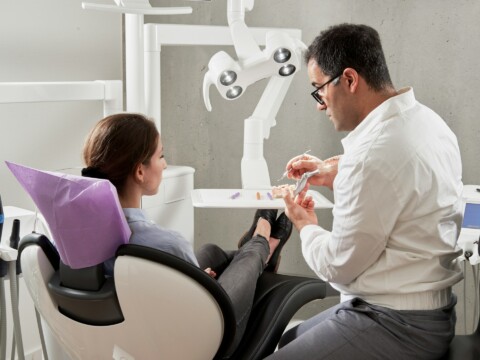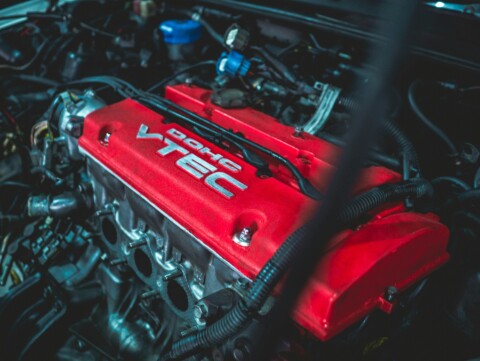LED technology has revolutionized lighting across industries, from commercial buildings to residential spaces. These energy-efficient solutions promise years of reliable service, but like any technology, they require proper care to deliver on that promise.
Many business owners and facility managers assume LEDs are maintenance-free, leading to premature failures and costly replacements. The reality is that professional LED maintenance can significantly extend product lifespan while delivering substantial cost savings over time.
Understanding the value of expert LED repair services helps organizations make informed decisions about their lighting investments. Rather than replacing entire systems when problems arise, strategic maintenance approaches can restore performance and add years to operational life.
This comprehensive examination of professional LED repair explores proven strategies for maximizing your lighting investment while reducing long-term operational expenses.
Understanding LED Degradation Patterns
LED systems don’t fail suddenly like traditional bulbs. Instead, they experience a gradual performance decline that affects light output, color consistency, and energy efficiency.
Common Degradation Factors
Several environmental and operational factors contribute to LED deterioration:
- Heat exposure from inadequate thermal management systems
- Power supply fluctuations that stress electronic components
- Moisture infiltration in poorly sealed fixtures
- Vibration damage in industrial or high-traffic environments
- Chemical exposure from cleaning agents or environmental pollutants
Early Warning Signs
Recognizing degradation symptoms enables proactive intervention before complete failure:
- Dimming output levels below specifications
- Color shifting or inconsistent color temperature
- Flickering or intermittent operation
- Visible discoloration of LED chips or housings
- Unusual heat generation during operation
Professional technicians can assess these indicators and determine appropriate repair strategies before replacement becomes necessary.
Professional Assessment Techniques
Expert LED repair begins with a comprehensive system evaluation using specialized diagnostic equipment and proven methodologies.
Advanced Diagnostic Tools
Professional repair services employ sophisticated testing equipment to identify issues:
- Photometers measure precise light output levels
- Spectroradiometers analyze color quality and consistency
- Thermal imaging cameras detect heat distribution problems
- Electrical meters evaluate power supply performance
- Oscilloscopes examine driver circuit functionality
Systematic Evaluation Process
Comprehensive assessments follow structured protocols:
- Visual inspection of all system components
- Performance measurement against manufacturer specifications
- Electrical testing of drivers and power supplies
- Thermal analysis of heat management systems
- Environmental assessment of installation conditions
This thorough approach enables technicians to develop targeted repair strategies that address root causes rather than symptoms.
Component-Level Repair Strategies
Professional LED maintenance focuses on repairing individual components rather than replacing entire systems, maximizing cost savings while extending operational life.
Driver Circuit Restoration
LED drivers regulate power delivery and significantly impact system longevity:
- Capacitor replacement restores power regulation
- Circuit board cleaning removes corrosive deposits
- Component testing identifies failing elements
- Firmware updates optimize performance parameters
Optical System Maintenance
Maintaining optical components preserves light quality and distribution:
- Lens cleaning removes dirt and contaminants
- Reflector restoration maintains beam patterns
- Housing resealing prevents moisture infiltration
- Heat sink cleaning improves thermal management
Power Supply Optimization
Stable power delivery extends LED chip life significantly:
- Voltage regulation adjustment prevents overstressing
- Surge protection installation guards against spikes
- Wiring inspection ensures proper connections
- Grounding verification prevents electrical issues
Cost-Benefit Analysis of Professional Maintenance
Understanding the financial impact of professional LED repair versus replacement helps organizations make informed maintenance decisions.
Direct Cost Comparisons
Professional repair typically costs 20-40% of full system replacement:
- Material costs for replacement components
- Labor expenses for diagnostic and repair work
- Downtime minimization through efficient service delivery
- Extended warranties on repaired components
Indirect Financial Benefits
Professional maintenance delivers additional value beyond immediate repair costs:
- Energy efficiency restoration reduces operational expenses
- Reduced replacement frequency minimizes capital expenditures
- Improved reliability decreases emergency service calls
- Enhanced performance maintains lighting quality standards
Return on Investment Calculations
Organizations typically see 300-500% ROI on professional LED maintenance programs within the first year of implementation.
Preventive Maintenance Programs
Structured maintenance schedules prevent major failures while optimizing long-term performance and cost savings.
Scheduled Inspection Protocols
Regular assessments identify potential issues before they impact operations:
- Quarterly visual inspections detect obvious problems
- Annual performance testing measures degradation rates
- Bi-annual deep cleaning removes accumulated contaminants
- Environmental monitoring tracks conditions affecting longevity
Predictive Maintenance Integration
Advanced monitoring systems enable data-driven maintenance decisions:
- IoT sensors track performance metrics continuously
- Automated alerts notify technicians of developing issues
- Performance trending predicts maintenance requirements
- Remote monitoring enables proactive service scheduling
Documentation and Tracking
Comprehensive maintenance records support optimization efforts:
- Service histories track component performance
- Failure analysis identifies recurring problems
- Cost tracking measures program effectiveness
- Performance metrics demonstrate improvement results
Technology Integration and Upgrades
Professional LED repair services often incorporate technology improvements that enhance performance beyond original specifications.
Smart Control Integration
Adding intelligent controls during repair processes increases functionality:
- Dimming capabilities reduce energy consumption
- Occupancy sensors optimize usage patterns
- Daylight harvesting adjusts output based on natural light
- Network connectivity enables remote management
Efficiency Enhancements
Component upgrades during repair can improve overall system efficiency:
- High-efficiency drivers reduce power consumption
- Advanced thermal management extends component life
- Improved optics enhance light distribution
- Enhanced surge protection prevents future damage
Future-Proofing Considerations
Professional repair services consider long-term technology trends:
- Compatibility planning for future upgrades
- Scalability preparation for system expansion
- Standards compliance with evolving regulations
- Technology roadmap alignment with industry developments
Maximizing Long-Term Value Through Professional Care
Professional LED repair represents a strategic investment in lighting infrastructure that delivers measurable returns through extended operational life and optimized performance.
The data consistently demonstrates that organizations implementing comprehensive LED maintenance programs achieve significant cost savings compared to replacement-focused strategies. Beyond immediate financial benefits, professional care ensures reliable lighting performance that supports productivity and operational efficiency.
Success requires partnering with qualified service providers who understand LED technology complexities and can deliver targeted solutions. This website offers resources for evaluating service providers and developing maintenance strategies that align with organizational objectives and budget constraints.
Investment in professional LED maintenance today creates a foundation for sustained performance and cost optimization that benefits organizations for years to come.






